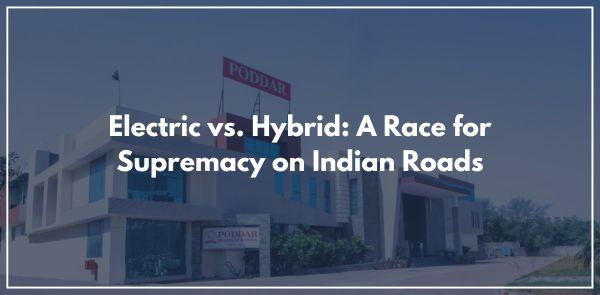
India's automotive industry is at a crossroads. As the nation strives for cleaner transportation, the battle lines are drawn between Electric Vehicles (EVs) and Hybrid Vehicles (HEVs). While both offer environment-friendly alternatives to traditional gasoline-powered cars, their paths to dominance diverge significantly. Let's analyze the current landscape and predict the trends that will shape the future of mobility in India.
EVs: The All-Electric Charge
The Indian government's push f
or EVs are undeniable, with ambitious targets and lucrative subsidies. EVs boast zero tailpipe emissions, potentially leading to cleaner air in urban centers. Furthermore, lower running costs due to electricity prices compared to petrol are enticing for budget-conscious consumers. However, challenges remain. Range anxiety, limited charging infrastructure, and a higher upfront cost compared to ICE vehicles (Internal Combustion Engine) are deterrents.
Hybrids: The Bridge Between Worlds
HEVs bridge the gap between conventional cars and EVs. They combine an electric motor with a gasoline engine, offering both fuel efficiency and the ability to handle longer journeys without range anxiety. Hybrids boast lower emissions compared to traditional vehicles, and their familiarity in terms of refueling infrastructure makes them a safer bet for some buyers. However, HEVs are not entirely emission-free, and their reliance on gasoline makes them dependent on fluctuating fuel prices.
The Road Ahead: Predicting the Winners
So, who will win the race? The answer, like most business scenarios, is nuanced. Here's what the future might hold:
- EV Infrastructure Boom: As the government and private players invest heavily in charging stations, range anxiety will diminish, making EVs a more viable option.
- Battery Breakthroughs: Technological advancements can potentially reduce battery costs and increase range, making EVs more attractive to a wider audience.
- Hybrid Sweet Spot: HEVs may find a niche market in budget-conscious segments or for consumers who undertake frequent long-distance trips.
- Policy and Incentives: Government policies, including tax breaks and subsidies, will significantly influence consumer preferences. Here's where an MBA or PGDM program from a well-respected institution like Poddar Group of Institutions in Jaipur comes in.
Understanding the Game:
The Indian automotive industry presents a complex and ever-evolving landscape. An MBA or PGDM program equips aspiring professionals with the analytical tools and business acumen to navigate such dynamic environments. By delving into subjects like market research, financial modeling, and strategic decision-making, graduates gain a deeper understanding of consumer behavior, market trends, and government regulations.
Imagine being part of a team that develops a groundbreaking marketing campaign for a new EV model, or analyzes data to optimize charging infrastructure rollout – an MBA or PGDM program equips you with the skills to excel in this fast-paced industry.
A Future Fueled by Knowledge
The future of Indian mobility hinges on innovation, strategic planning, and a keen understanding of consumer preferences. Whether it's the all-electric revolution of EVs or the continued relevance of Hybrids, a successful career in this domain demands a comprehensive grasp of industry dynamics. An MBA or PGDM program from Poddar Group of Institutions empowers you to become a valuable asset in this exciting race, helping you analyze, understand, and execute strategies that will shape the future of transportation in India.
